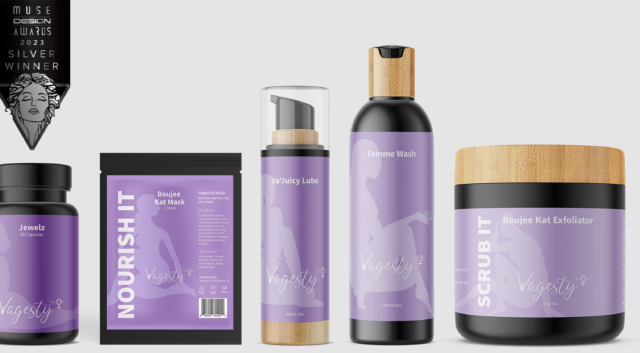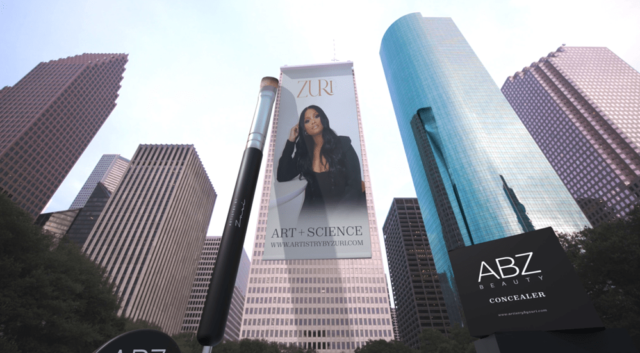Brand experience is a cornerstone of business, especially for those with a brick-and-mortar presence. Without a strong and consistent brand experience, it would be difficult to attract customers. So, what are the individual building blocks of brand experience?
Let’s zoom out for a moment to consider what “experience” actually means. We humans “experience” life through our five senses. Right. Duh. But here’s the catch: Many brands fail to capitalize on all five.
Of all the senses, sight gets the most press, but typically the spotlight shines on imagery and iconography. The golden arches of McDonald’s. The green silhouette of the Starbucks mermaid. The kind visage of Colonel Sanders on a bucket of KFC fried chicken. These icons are so indelibly linked to these brands that they’ve permeated our collective imagination.
Let’s instead open up the hood and peek at the color psychology that turns this engine. Just as soft lighting or harsh lighting can drastically alter the mood of a room, colors set the tempo of a branded environment.
The ubiquitous presence of yellow in McDonald’s branding conjures notions of sunshine, warmth and joy, making you think of childhood and smiley faces. The green of Starbucks and Whole Foods suggests robust health and a oneness with nature.
Recommendation: Use color theory to your advantage. Understand what feelings your brand intends to evoke, then deploy colors in your environments like secret agents, tasked with covertly pacing the moods and emotions of your guests.
The sense of smell — the “emotional sense” — travels a unique pathway into the human brain which connects it deeply to memory. Brands that are successfully married to pleasant scents within their customers’ memories have an added layer of seductive ability.
Consider Abercrombie & Fitch. The garments that fill its stores are drenched in its signature fragrances, creating powerful associations between these fierce, outdoorsy scents and the brand, as well as the lifestyle that’s suggested by the brand.
Upon your escape from the Abercrombie store in the mall, you may be subsequently lured by another powerful scent emanating from Cinnabon. The aroma of cinnamon just happens to be associated with warmth, comfort and perhaps guilty pleasure.
Fitness brands — to be certain — lack this kind of natural olfactory advantage, but there are preemptive measures that can be taken to offset this. For example, a scent diffuser can be employed to pump the energizing smell of eucalyptus into a gym or the relaxing scent of lavender into a spa.
Recommendation: Face it — to some extent, your brand probably smells already. Assess whether that can be amplified for your benefit or whether other scents should be deployed as defensive agents.
Sound is often thought of in terms of music. Along these lines, brands like Starbucks use playlists like audio wallpaper in their locations, suggesting certain moods and lifestyles to be associated with their brands.
But sound impacts brand experience in a number of other ways. As audio engineers and good architects know, the reverberance levels of interior spaces can significantly affect the quality of one’s experience in that space.
Speech intelligibility is significantly impaired in highly reverberant spaces. If you can’t understand what your dinner companions are saying, you likely won’t take them back to that same restaurant. On the flip side, if there’s too little reverberance in a dining space, there may be a creepy feeling of closeness with surrounding tables. It’s all about striking the right balance. Depending on the kind of environment you’re looking to create, elements can be added to either absorb or reflect sound.
You can also flip the script on bad sounds. For example, Planet Fitness features “Lunk Alarms” on its walls. The net effect here is that by incorporating an occasional alarm sound into its brand experience, it deters certain other sounds that it explicitly doesn’t want in its brand experience — namely, the beastly grunting and loud weight-dropping of “lunks,” common to other gyms.
Recommendation: Go to one of your competitor’s locations and sit quietly for a moment with your eyes closed; take note of what you hear — and also what you don’t hear — then apply those thoughts to your brand. Is the banging of the metaphorical pots and pans something you want to hide or emphasize for energy’s sake? Dealer’s choice.
Often overlooked, the sense of touch can have a powerful impact on brand experience — ranging from feelings of temperature comfort and the texture of furniture to the use of hands-on experience with products or even other humans.
Consider how Apple deliberately has a very hands-on experience in its retail locations, intended for you to have the tactile experience of feeling the newest iProduct in your hands, manifesting its attachment to those very hands — until the next model comes out, of course.
Recommendation: Think about what textures people will encounter as they interact with your brand and the duration of time for which they will be interacting with them. Be consistent with your temperatures, your furniture and your high-fives.
Admittedly, taste is the sense most often confined to a single vertical — food service. However, outliers exist. Consider Ikea, famous for furniture, but also the Swedish meatballs you’re likely embarrassed to admit you love. These are indeed part of the Ikea brand experience, rolling a touch of savory Swedish kindness into the mix.
But getting back to food service, strategic freebies can go a long way in the taste department. If you go to your local Friendly’s or DQ, you’re likely to be offered free samples of different ice cream flavors, activating your sweet tooth — and shortly thereafter, your wallet.
Also think of the warm, soft, unlimited signature breadsticks you get after ordering your meal at Olive Garden. After stuffing your face with those, odds are high that you’ll be taking half of your entrée home, but also that you’ll be returning to the OG.
Recommendation: Consider ways that you can intertwine the sense of taste into your brand experience; but if you’re offering to put something in your customer’s mouth, please be sure that it tastes good. In other words, if you’re an oil change franchise serving coffee in the waiting room, be sure that the coffee doesn’t taste like your motor oil.
Lastly, one overarching bit of advice pertaining to your sensory branding efforts: Be knowledgeable, be intentional and be consistent!
Certain brands that master the weaving of all five senses into the mosaic of their brand experience can capture that elusive “sixth sense” — the clairvoyance of being in the presence of the master touch.





